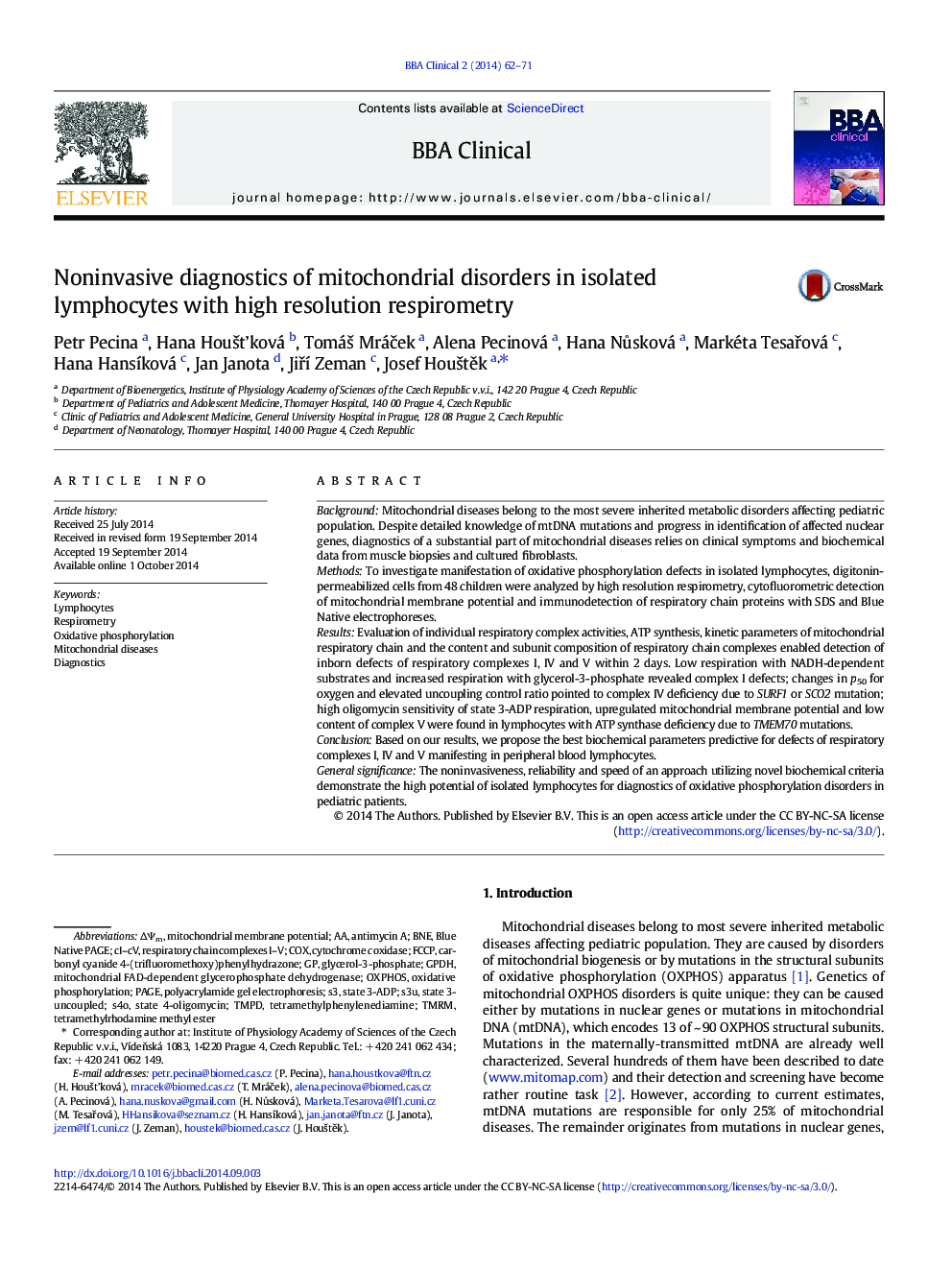| Article ID | Journal | Published Year | Pages | File Type |
|---|---|---|---|---|
| 2773219 | BBA Clinical | 2014 | 10 Pages |
•Analysis of inborn mitochondrial disorders in peripheral blood lymphocytes•Detection of specific defects of respiratory chain complexes I, IV and V•Manifestation of cytochrome c oxidase deficiency due to SCO2 mutations•Rapid and noninvasive diagnostics/screening appropriate for pediatric patients
BackgroundMitochondrial diseases belong to the most severe inherited metabolic disorders affecting pediatric population. Despite detailed knowledge of mtDNA mutations and progress in identification of affected nuclear genes, diagnostics of a substantial part of mitochondrial diseases relies on clinical symptoms and biochemical data from muscle biopsies and cultured fibroblasts.MethodsTo investigate manifestation of oxidative phosphorylation defects in isolated lymphocytes, digitonin-permeabilized cells from 48 children were analyzed by high resolution respirometry, cytofluorometric detection of mitochondrial membrane potential and immunodetection of respiratory chain proteins with SDS and Blue Native electrophoreses.ResultsEvaluation of individual respiratory complex activities, ATP synthesis, kinetic parameters of mitochondrial respiratory chain and the content and subunit composition of respiratory chain complexes enabled detection of inborn defects of respiratory complexes I, IV and V within 2 days. Low respiration with NADH-dependent substrates and increased respiration with glycerol-3-phosphate revealed complex I defects; changes in p50 for oxygen and elevated uncoupling control ratio pointed to complex IV deficiency due to SURF1 or SCO2 mutation; high oligomycin sensitivity of state 3-ADP respiration, upregulated mitochondrial membrane potential and low content of complex V were found in lymphocytes with ATP synthase deficiency due to TMEM70 mutations.ConclusionBased on our results, we propose the best biochemical parameters predictive for defects of respiratory complexes I, IV and V manifesting in peripheral blood lymphocytes.General significanceThe noninvasiveness, reliability and speed of an approach utilizing novel biochemical criteria demonstrate the high potential of isolated lymphocytes for diagnostics of oxidative phosphorylation disorders in pediatric patients.
